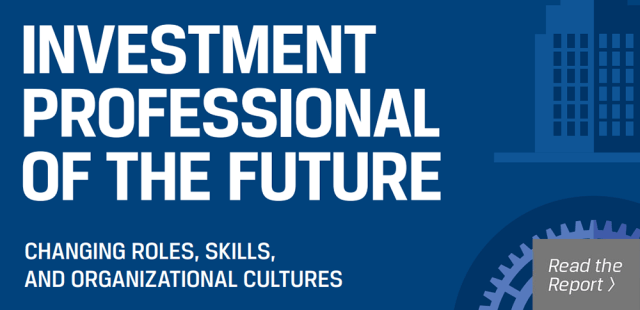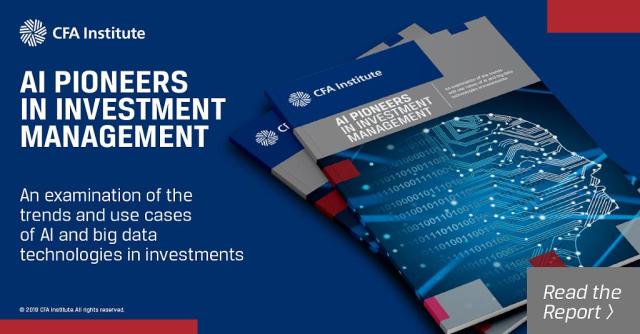[ad_1]
The investment industry stands at a pivotal juncture. Faced with accelerating change, firms have a stark choice: They can either adapt to an increasingly competitive environment or succumb to potentially existential threats.
While the sources of change today are too numerous to mention, technology, regulation, competition, and macroeconomic and geopolitical headwinds are leading the way. Pressure on profit margins and evolving client expectations all serve to underscore the obvious: For the investment industry, business as usual will no longer suffice.
So how can firms and practitioners navigate and adapt to these challenges?
Responsible innovation, which prioritizes purposeful capitalism and puts client interests first, could be a key aspect of the solution.
It is the mission of the Asset Management Innovation (AMI) Initiative, a pan-European group of senior asset management leaders, to position the European asset management industry at the forefront of responsible innovation.
With this in mind, under the AMI’s auspices, we gathered with more than 20 senior industry practitioners in late November in Madrid with a singular objective: To understand responsible innovation in European asset management through the lenses of business models, products, and distribution.
Asset Management Innovation (AMI) Discussion Participants
| Olatz Aurrekoetxea | Josina Kamerling | Rhodri Preece, CFA |
| Gary Baker, CFA | Ulrich Koall, CFA | Massimiliano Saccone, CFA* |
| Mirari Barrena | Sam Livingstone, CFA* | John Siska, CFA |
| Tatjana Bojkovska, CFA, CIPM | Brunno Maradei, CFA | Jean-Bernard Tanqueray |
| Primož Cencelj, CFA | Ruben Nieto Martin-Vares | Sergio Álvarez Teleña |
| Eelco Fiole, CFA | José Luis de Mora Gil-Gallardo, CFA | Elisabeth Vishnevskaja, CFA* |
| Lorenzo Garcia | Edward O’Loghlen, CFA | David Wahi |
| Alejandro Hiniesto, CFA* | Fabrizio Palmucci, CFA* | Irina Zilbergleyt |
| Cristina Rodriguez Iza, CFA |
* Members of AMI
The discussion was the first in a series of European workshops that will harvest recommendations from both the “old world” of traditional asset managers and the “new world” of fintech in an effort to further AMI’s mission.
Below are some of the critical takeaways that emerged from our first conversation.
1. Business Models
With operating margins that often exceed 30%, European asset managers have felt little pressure to change or evolve, while increased regulation has deterred competition. Together, this gives the sector a wide moat.
When asset values and, correspondingly, fund flows are rising, the traditional pricing model — a fee based on assets under management (AUM) — discourages innovation. There is no incentive to kill the golden goose of fee revenue. As a result, the asset management industry has lagged other sectors when it comes to innovation.
But two technologies — blockchain and artificial intelligence (AI) — could have transformative implications for firm operating and investment models.
Blockchain’s potential is enormous. Not only can it transfer and record something of value, such as ownership of assets, and help raise capital through the issuance of smart contracts, it can improve cybersecurity and help protect client assets. But digital wallets and keys based on blockchain require more robust protections. Moreover, blockchain may be slower than expected and transaction approval could take additional time as the networks grow more complex.
While fintech providers are developing hardware and protocols to protect digital keys, there is a fundamental trade-off between how quickly a firm can deploy a new technology, and the robustness of its operating platform. The earlier a new technology is introduced, the more risk to its operating platform. On the other hand, the later a new technology is adopted, the more market share the firm risks losing.
Several AI advancements — machine learning algorithms, natural language processing (NLP), computer vision and voice recognition, among them — can streamline investment processes and improve decision making. But there are potential pain points. Data has limitations: It can be noisy and difficult to parse. And change can be uncomfortable: Investment professionals may be slow to adapt. But in the future, they will have to understand technology and know how to collaborate with data scientists and programmers in developing strategies and products.
Lastly, since human advice means higher fees, asset managers have had little incentive to automate. For example, one participant is teaching IBM’s Watson AI to provide investment advice to wealth managers through a virtual assistant. Though the technology is already in wide use in other sectors, it has only just begun to be applied to financial advice.
2. Products
Effective communication is essential when marketing AI-driven investment products. Firms must explain the investment strategy and methodology clearly and avoid AI washing and obfuscation. Clients must understand how the AI is being used and the additional value it may bring.
More generally, new product innovations often provide little insight into the underlying investment strategy. For example, environmental, social, and governance (ESG) investing is a recurring theme, yet the marketing of such products makes it difficult for clients to assess how well the investment approach may fit with their specific objectives.
In terms of AI, natural language processing (NLP) is an off-the-shelf technology that could transform unstructured textual data into more easily exploitable structured information. This could give investors access to alternative sources of data and help them determine sentiment analytics from social media, for example.
Ultimately, responsible product innovation comes down to aligning incentives. Product manufacturers and distributors should be incentivized to create products that put client interests first and have appropriate deterrents — built into fee structures, for example — to poor performance.
3. Distribution
Sales channels in Europe are inefficient. Differences in national practices and local regulations inhibit continent-wide distribution and create barriers to scale in distribution platforms. This contributes to a fragmented market.
The lack of uniformity and the heavily regulated nature of the financial services sector will make it difficult for an Amazon-like entity to enter the investment product distribution space. After all, buying an investment fund is not like buying shoes from an online store. For the individual, it requires more time and more in-depth decision making. The distributor, on the other hand, has extensive rules and regulations to follow in marketing and selling the product. This may complicate how products are recommended based on browsing histories or personal preferences, for example.
Buying and selling funds via blockchain is one form of innovation in distribution. If further developed, it could eliminate the need for local transfer agents and duplicative reconciliation processes between the fund administrator and the depositary. This would strip out costs that are currently borne by the end investor. By moving transactions to the blockchain, settlement times could be reduced or eliminated. With one transparent ledger and proof of ownership for all parties involved, asset managers would no longer have to maintain their books and records for fund transactions and could pass the accompanying savings along to clients.
A key test of any innovation, we concluded, is whether it increases revenues or reduces costs. Responsible innovation requires more than that: It must transcend narrow business interests and address its social and environmental impact. New offerings should test for the effect on all stakeholders and build in guards against potential harms. Responsible products should be transparent, ethical, and add value both to clients and society. By embracing responsible innovation, asset managers will ensure a sustainable competitive advantage and remain key actors in the future of finance.
The Asset Management Innovation Initiative will discuss these concepts in greater depth in the weeks and months ahead.
If you liked this post, don’t forget to subscribe to the Enterprising Investor.
All posts are the opinion of the author. As such, they should not be construed as investment advice, nor do the opinions expressed necessarily reflect the views of CFA Institute or the author’s employer.
Image credit: ©Getty Images/Yuichiro Chino
Continuing Education for CFA Institute Members
Select articles are eligible for continuing education (CE) credit. Record credits easily using the CFA Institute Members App, available on iOS and Android.
[ad_2]
Image and article originally from blogs.cfainstitute.org. Read the original article here.



